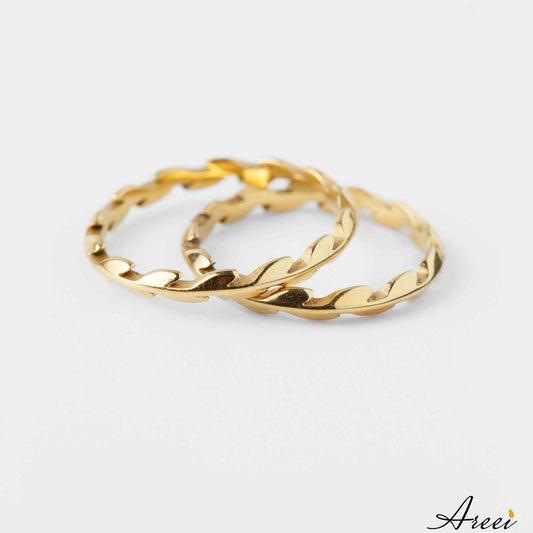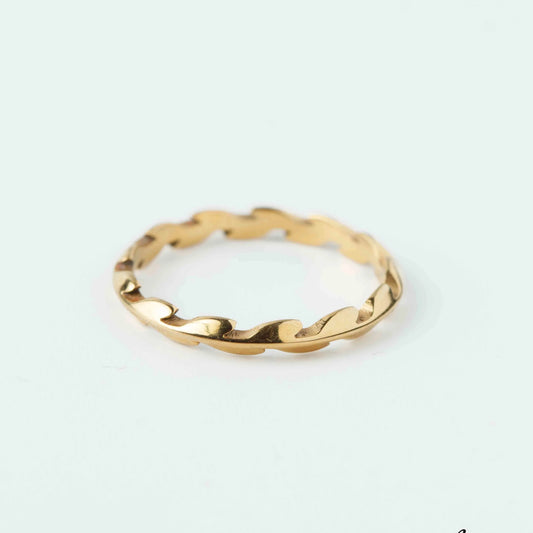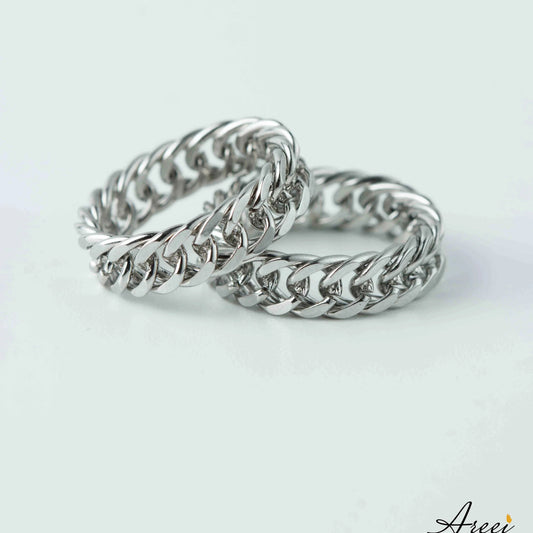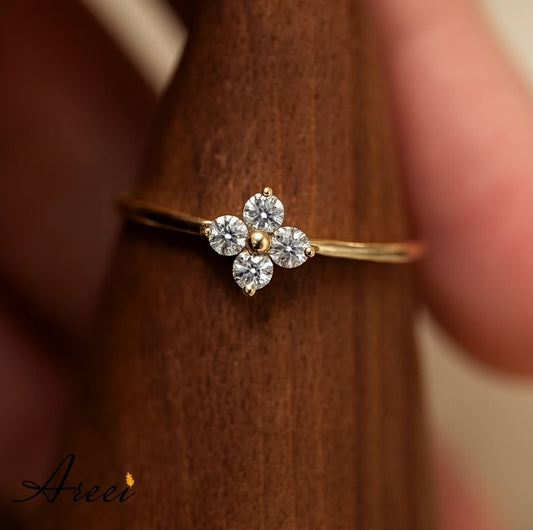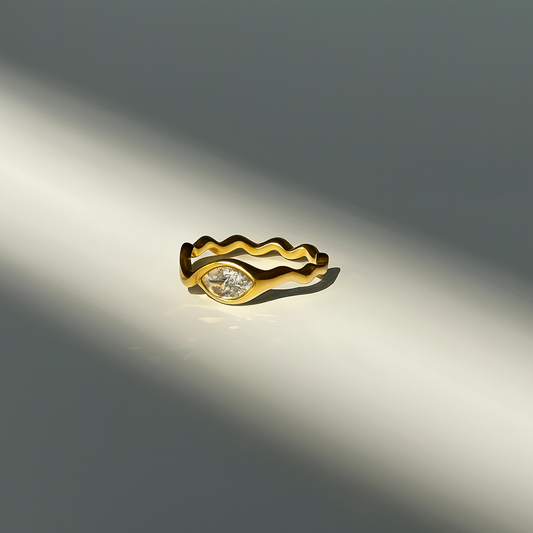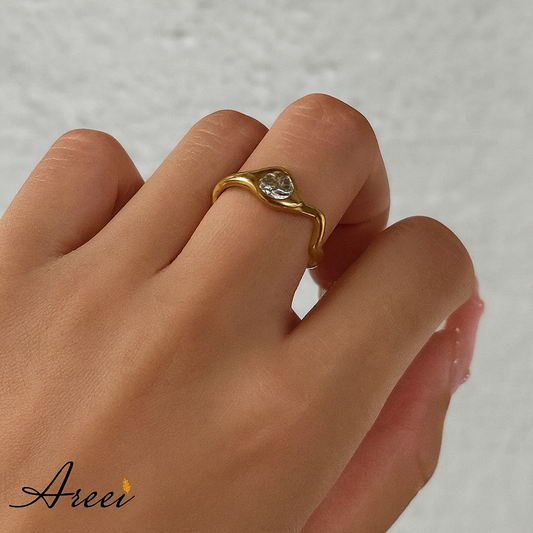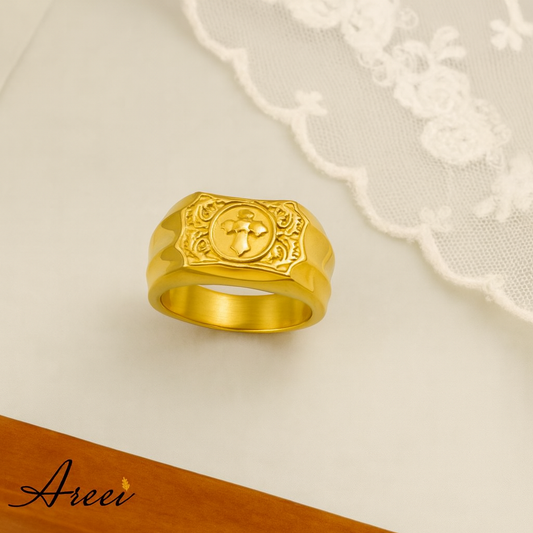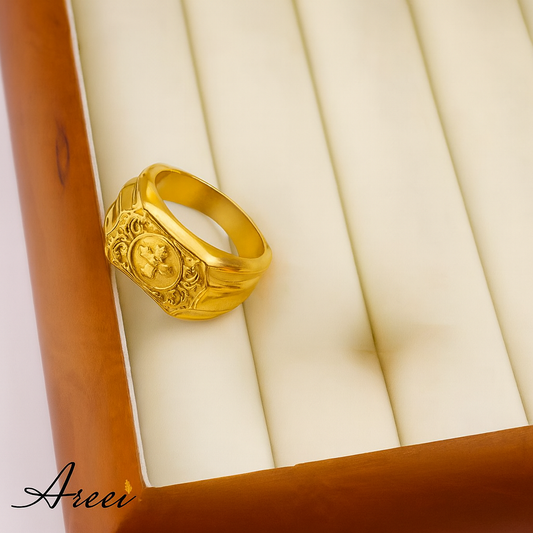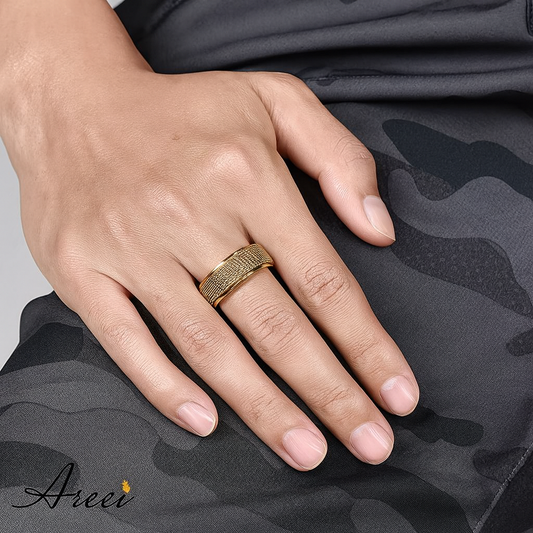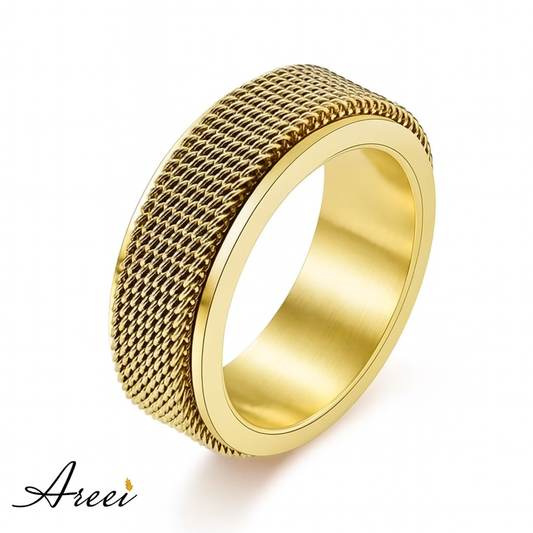Melody Croissant Gold Ring from Areei
This is one of the most frequent questions that has been commonly asked throughout history: What do the rings on each finger mean? They have served as powerful symbols across different cultures, religions, and traditions. The finger on which a ring is worn often carries specific meaning, from relationship status to spiritual significance, and sometimes they’re just rings on fingers with no particular reasons. This comprehensive guide explores the symbols and meaning behind ring placement and what it means in various contexts.
What Do Rings on Each Finger Symbolise?
The practice of wearing rings as symbols goes back thousands of years, and it’s not a new trend. In ancient Egypt it was believed that the ring finger contained a vein—the vena amoris or "vein of love"—that connected directly to the heart. Romantic, right? Romans and Greeks adopted similar beliefs, establishing traditions that have continued to influence modern-day ring-wearing customs.
What do the 5 fingers represent?
Each finger traditionally carries different symbols and meanings across different cultures:
- Thumb: Represents willpower, self-assertion, and identity
- Index Finger: Associated with leadership, authority, and ambition
- Middle Finger: Symbolises balance, responsibility, and justice
- Ring Finger: Connected to creativity, beauty, relationships, and love
- Pinky Finger: Represents communication, intelligence, and intuition
These different meanings have evolved through centuries of cultural practices, astrology, palm reading, and spiritual traditions.
Diana Minimalist Ring from Areei
Which finger symbolises what?
Thumb:
- Symbolises willpower and self-determination
- In many Eastern cultures, represents the ego and personal identity
- Can indicate wealth and status when adorned with rings
Index Finger
- Traditionally associated with leadership and authority
- In some European traditions, the index finger was where signet rings were worn by nobility
- Represents ambition and direction in life
Middle Finger
- Symbolises balance and responsibility
- Often left unadorned due to its practical position and frequent use
- In some traditions, associated with Saturn and represents justice and equilibrium
Ring Finger
- Primarily associated with love, relationships, and commitment
- Contains the aforementioned "vena amoris" in romantic tradition
- In Western cultures, the left ring finger typically holds wedding and engagement rings
- In Eastern Orthodox traditions, right ring finger often holds the wedding ring
Pinky Finger
- Associated with communication and intelligence
- Often where professional rings (like those for engineers or graduates) are worn
- In some traditions, linked to Mercury, the messenger god
Which is the luckiest finger?
Of course there’s a lucky finger, though it is not scientifically proven, but in some cultures there’s a belief in the concept of a "lucky" finger.
- In Western traditions, the ring finger is often considered the luckiest for wearing gemstones and protective jewellery due to its direct connection to the heart.
- In Hindu astrology, the index finger is associated with Jupiter (Guru), the planet of fortune and expansion, making it auspicious for certain rings.
- Chinese traditions often regard the thumb as lucky for rings that bring success and prosperity.
- In Middle Eastern cultures, rings worn on the middle finger are believed to bring balance and stability.
Although there isn’t universally a "luckiest" finger, many modern jewellers and spiritual practitioners recommend selecting finger placement based on the specific intention behind wearing the ring.
Which Finger Represents Relationship Status?
For those in relationships, yes, the placement of your ring on your finger can be used to communicate your relationship status, but different cultures develop their own systems of showing availability, commitment, or marriage.
Which finger means single?
Unfortunately, there's no universal "single" finger, but there are certain practices in different cultures that show this:
- In some Western countries, a ring worn on the right ring finger may indicate that someone is dating but not yet engaged.
- In traditional Brazilian culture, wearing a ring on the right ring finger signifies being single but open to relationships.
- In some European countries, particularly Germany and the Netherlands, single individuals seeking relationships might wear a ring on the right ring finger.
In the modern world we live in now many people wear rings on any finger simply for decoration, so the points mentioned above aren't always the best indicators of relationship status.
Which finger is for relationship?
Committed relationships are typically signified by:
- Left ring finger: In most Western cultures, including the United States, Canada, and the UK, engagement and wedding rings are worn on the left ring finger.
- Right ring finger: In many Eastern European countries, Russia, India, and parts of South America, married individuals wear their wedding rings on the right ring finger.
- Both ring fingers: Some cultures, particularly in Jewish traditions, might place the wedding ring on the right hand during the ceremony and move it to the left hand afterward.
Your cultural and religious differences significantly influence which hand is considered the "relationship hand." So wherever you are, watch out if you notice any of these differences.
Which finger is for a promise ring?
Promise rings are used to symbolise a commitment that isn’t an official engagement; sometimes friends use them as a symbol of their friendship, and they can be worn on different fingers:
- Many wear promise rings on the left ring finger if they're not yet engaged, then move them to the right hand after receiving an engagement ring.
- Others choose the right ring finger to avoid confusion with engagement rings.
- Some wear promise rings on the middle finger of either hand to distinguish them from wedding and engagement rings.
Note that the meaning of a promise ring varies considerably—from pre-engagement commitments to promises of sobriety, chastity, or friendship—so placement can be personalised to the relationship context.
What Does a Thumb Ring Mean in Different Cultures?
Thumb rings carry particularly diverse meanings across cultures:
- In ancient archery cultures, including those of Mongolia, Persia, and Turkey, thumb rings were functional tools used to protect the thumb while drawing bowstrings.
- In many Middle Eastern cultures, thumb rings traditionally symbolised wealth and status, often crafted from precious metals and gemstones.
- Some Native American traditions associate thumb rings with protection and strength.
- In contemporary Western fashion, thumb rings often represent individuality and nonconformity.
What does the thumb ring mean LGBT?
Within LGBTQ+ communities, thumb rings have gained specific significance:
- During the late 20th century, particularly in lesbian communities, a thumb ring emerged as a subtle signal of one's sexual identity when more overt expressions might have been dangerous.
- The practice evolved from earlier "pinky ring" traditions that had similar connotations in earlier decades.
- Today, while less necessary as a covert signal, thumb rings remain popular within some LGBTQ+ circles as a nod to this history.
- The meaning varies widely depending on location and generation, with some wearing them simply as fashion statements with no intended signaling.
Modern LGBTQ+ ring symbolism has expanded beyond finger placement to incorporate rainbow colours, specific designs, and materials, making identification through ring placement alone less definitive than in past decades.
Ring symbolism has grown considerably and will continue to grow even as culture, religions, and other practices continue to evolve. So whether you’re following traditional meanings or creating new ones, the placement of rings remains a subtle but powerful form of communication across the globe.
